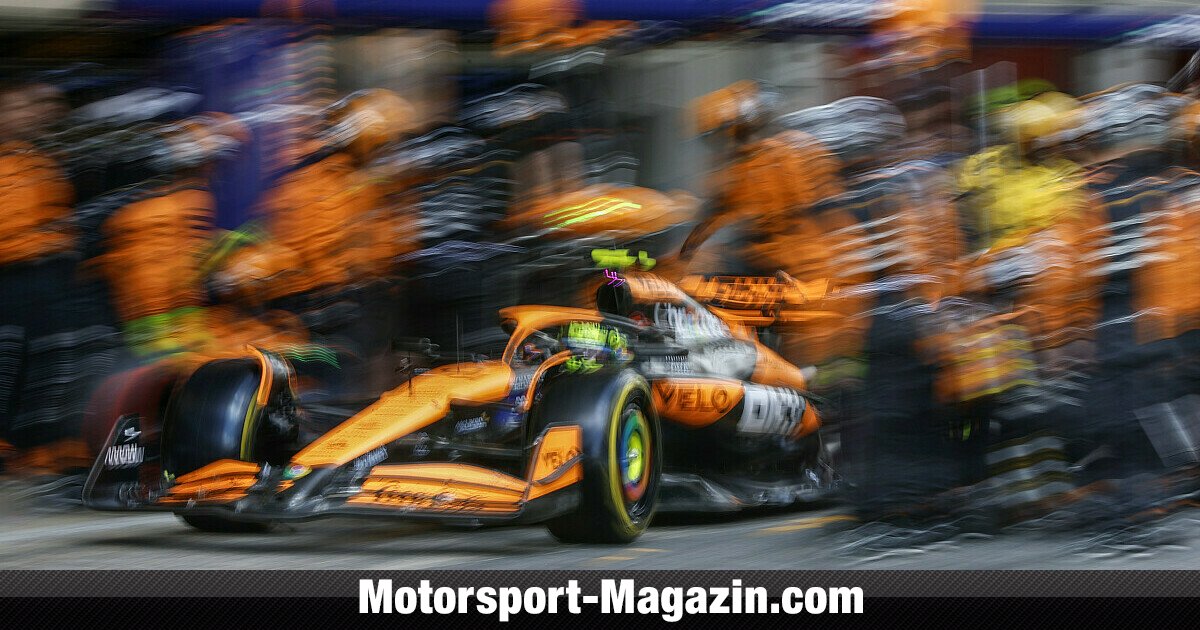1. Why did George Russell and Carlos Sainz switch to the hard tires?
In the last stint of the Formula 1 race, George Russell and Carlos Sainz, among others, put on the hard tires. A failure, as soon turned out. The hard tires were not able to provide good pace, at least for Russell and Sainz, and as a result both lost a position to their teammates. This was a mistake that had two reasons. On the one hand, the performance of the hard tires was overestimated. Mercedes, for example, planned to do a final stint on hard tires.
It was only when these proved to be a mistake on George Russell’s car that Lewis Hamilton was switched. In order not to lose track position, a number of teams also scheduled their first stop particularly early based on this calculation. Almost all teams (except Williams) had only saved a single version of medium tires for the race, so the automatic choice before the last stop was: soft or hard. Because of the early first stop, it was often still too early for the soft tires when the middle stint tires wore out. Both Russell and Sainz stopped on lap 36 – driving to the finish on soft tires? Impossible!
2. Why was Charles Leclerc angry with Carlos Sainz?
Within Ferrari, Barcelona had a lot of drama to offer shortly after the start. On lap 3, Sainz attacked Charles Leclerc and immediately passed his teammate. There was even a little contact between the duo in turn 1. Leclerc was annoyed afterward. The team strategy of the Reds actually stated that the focus should be on saving tires in this phase of the race, but Sainz ignored this. Leclerc suspected that Sainz made the attack because he wanted to make a good impression in front of his home crowd.
3. Why did Lando Norris come into the pits later in the first stint?
Together with Norris, McLaren therefore decided to risk a podium place and create a tyre delta. In other words: stop later in order to have a pace advantage over Sainz, the Mercedes duo and Verstappen with fresher tyres. Without the stop, McLaren would have saved themselves one or two overtaking maneuvers, but would have had even more problems with Russell. A gamble that worked at least in the first part, because in the middle stint Norris picked up one place after the other. In the end, it was just not enough for Verstappen. But the gap after the first stint and the time lost in traffic were probably too big for that.
4. Why did Mercedes start on used tires?
Both Mercedes started the race with used soft tires, while most of the leading field had fresh tires on top. This was simply because the Silver Arrows had no unused soft tires left in the pool for the Formula 1 race in Barcelona, so used ones had to be put on. The performance disadvantage, if there was one at all, is negligible. The starting tires only had one push lap from qualifying on top, so a maximum of three laps in total. So the performance was still there, the tires did not prevent George Russell from taking the lead at the start.
5. Why did Kevin Magnussen receive a penalty?
The Dane received his five seconds for a false start. Before the five lights went out, he rolled forward a tiny bit. This did not give him a significant advantage for the start, as the stewards also stated in their justification, but they could not avoid penalizing him. At least only with a five-second penalty and without handing out penalty points. The latter is an important factor in the case of Magnussen, who already has ten penalty points on his account.
6. Why did Alex Albon swear on the radio?
After the race, Albon explained that at that point he demanded an answer from the team as to what exactly had happened. According to his own statement, he was not pushing himself to the limit at that point and was even saving fuel. The answer that was subsequently revealed is relatively simple: “It was a strong gust of wind. We found that out afterwards, but I didn’t know it at the time,” said Albon. The Williams was particularly susceptible to wind this weekend. Because of this and a number of other problems, Logan Sargeant even spoke of the “worst race of the year.”
7. Did Zhou’s chassis change make a difference?
Zhou Guanyu received a new chassis this weekend after he was completely out of sorts at the last few Grands Prix. Did that have a positive effect in Barcelona? According to the Chinese, the answer is yes. After qualifying he was already sure: “I’m much happier with it and was able to push harder. When I feel like the car is moving, I can catch it better and get it under control. In Monaco, however, as soon as the tires went out the window, I was out of control.” He and Sauber team-mate Valtteri Bottas were still unable to score any points.
